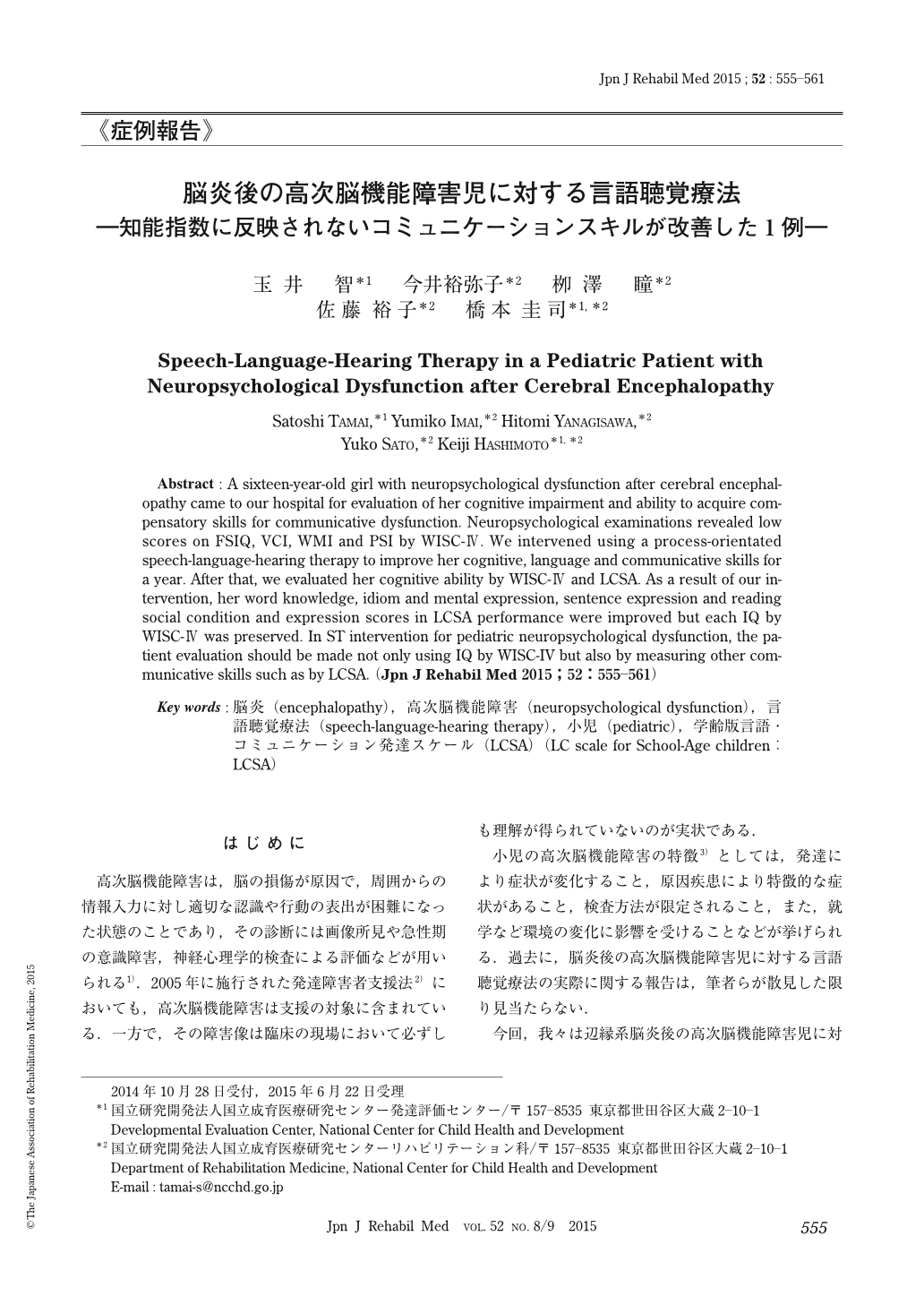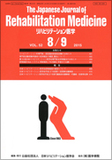Japanese
English
- 販売していません
- Abstract 文献概要
- 1ページ目 Look Inside
- 参考文献 Reference
はじめに
高次脳機能障害は,脳の損傷が原因で,周囲からの情報入力に対し適切な認識や行動の表出が困難になった状態のことであり,その診断には画像所見や急性期の意識障害,神経心理学的検査による評価などが用いられる1).2005年に施行された発達障害者支援法2)においても,高次脳機能障害は支援の対象に含まれている.一方で,その障害像は臨床の現場において必ずしも理解が得られていないのが実状である.
小児の高次脳機能障害の特徴3)としては,発達により症状が変化すること,原因疾患により特徴的な症状があること,検査方法が限定されること,また,就学など環境の変化に影響を受けることなどが挙げられる.過去に,脳炎後の高次脳機能障害児に対する言語聴覚療法の実際に関する報告は,筆者らが散見した限り見当たらない.
今回,我々は辺縁系脳炎後の高次脳機能障害児に対し言語聴覚療法を行い,知的機能のみでは判断できない言語機能の変化を客観的に評価し,小児の高次脳機能障害によるコミュニケーション障害の改善について若干の知見を得たので報告する.
Abstract : A sixteen-year-old girl with neuropsychological dysfunction after cerebral encephalopathy came to our hospital for evaluation of her cognitive impairment and ability to acquire compensatory skills for communicative dysfunction. Neuropsychological examinations revealed low scores on FSIQ, VCI, WMI and PSI by WISC-Ⅳ. We intervened using a process-orientated speech-language-hearing therapy to improve her cognitive, language and communicative skills for a year. After that, we evaluated her cognitive ability by WISC-Ⅳ and LCSA. As a result of our intervention, her word knowledge, idiom and mental expression, sentence expression and reading social condition and expression scores in LCSA performance were improved but each IQ by WISC-Ⅳ was preserved. In ST intervention for pediatric neuropsychological dysfunction, the patient evaluation should be made not only using IQ by WISC-IV but also by measuring other communicative skills such as by LCSA.

Copyright © 2015, The Japanese Association of Rehabilitation Medicine. All rights reserved.


